The Bank of England has made the biggest single rate rise in 33 years and also expects the UK to fall into the longest-ever recession and has warned the UK would face a “very challenging” 2-year slump.
The unsteady climate means it is really important to look at your business plan and be thinking about the year ahead.
A business plan is a written document that communicates your business strategies, objectives, and forecasts. If you’re just setting out on your business journey, a business plan is a great place to start. Alternatively, if you’ve been trading for a while, it can be a helpful practice to realign stakeholders’ staff, and customers at any stage. A strong sense of purpose and a bulletproof business plan will also keep the naysayers at bay.

Creating a business plan can be daunting, especially whilst trying to navigate the waves of a post-pandemic world and its unsteady climate. You may feel defeated before you’ve even begun, but you must plan anyway. While businesses try to find a new normal, your strategy can’t read ‘business as usual’. We are all in the same boat, but your business is unique, so your business plan must be.
Your business plan can take many forms. Investors, lenders, and stakeholders will be looking for a thoroughly researched and structured plan. However, if you are writing solely for your own benefit it can comprise of scribbled notes on a napkin! So, try not to feel overwhelmed putting pen to paper, ultimately as long you find it helpful, it will be.
How to Write a Business Plan in 7 Steps
1. Clarify your business idea
Why does your business exist? What is its primary objective? Once you can articulate this (sometimes known as a mission statement), your activities and goals will flow from it. This can include everything from product range to supply chain, logistics and marketing. It’s your job to know your business inside out like no one else does.
2. Assess your strengths and spot potential problems
Look at your business’s Strengths and Weaknesses and consider the Opportunities open to you and the Threats you face (SWOT analysis). Sometimes just writing your plan down on paper will bring things to your attention that you hadn’t previously thought of. If you can spot obstacles before, they spot you, you will be much better equipped to deal with them head on. This step will arm you with a toolbox of contingency plans, flexible thinking, and determination.
3. Set goals
It’s said that the more you visualise something, the more likely it is to come true. So, dream big! Set yourself short and long-term goals that spread far and wide. Goals give you purpose and a reason to get up in the morning. It’s also incredibly motivating to tick them off as you go. If you don’t plan for success, you’re leaving it up to chance.
4. Keep focused by identifying the steppingstones to your goals
Laminate it, frame it, and stick it on your fridge. The road of any business, especially a new start-up, will be tough and sometimes quite lonely. Keeping your eye on the prize and reminding yourself why you are doing what you’re doing can really help to keep focus and hold those involved responsible for contributing to the wider picture.
5. Maintain direction
Seeing your plan written down in front of you solidifies your vision. When the slow days and the bad days come, keep referring to your plan and it will keep you on the right track in the face of any knockbacks. It will also create an empowering sense of community for staff and customers alike.
6. Align staff and investors
A central vision that is reflected in a company’s behaviour, attitude, branding, and customer service will garner the credibility and trust of suppliers, investors, and customers. The businesses that stand the test of time are the ones that stay true to their vision and share it with their stakeholders.
7. Measure your progress
Without defined objectives how will you know if you’re achieving them? A business plan with well-defined goals will be much easier to monitor and propel into success. If your goals are supported by timelines and protectories you’ll also be able to identify if you’re veering off course before it’s too late to steer things back on track.
Writing a Business Plan and Risk Management
Usually, business plans don’t focus so much on what might happen if disaster strikes. However, it is important to conduct a risk assessment of your business to ensure you can keep operating and performing throughout potential challenges. Risk management can be broken down into four phases: prevention, preparation, response, and recovery. Consider and prioritise the following areas that an uncertain climate or disruption may impact:
- Accounting, cash flow and payroll
- Business commitments and legal implications
- Staff availability and performance
- The supply chain of materials, resources, and equipment
- Production timelines
- Customer footfall, demand, and sales
- Travel and transport restrictions
- Availability of health and childcare services
- Logistics, opening hours and working conditions


While writing a business plan during uncertain times you may also find it helpful to keep evaluating the behaviour of your stakeholders at each step. What does their behaviour look like now and what do you think it’ll look like in the future? Look at the internal habits of your customers and the external pressures that they will or may face. Put yourself in their shoes and then communicate your contingency plans with them.
Now you’ve considered the areas of your business that may be affected, and you can incorporate these into a responsive plan supported by the following steps:
- Establish clear guidelines for stakeholders and decision makers including incident response
- Update contact lists and reinforce open lines of communication
- Train staff to operate across functions to maintain productivity and cover for absences
- Create a team responsible for implementing necessary changes
- Address the potential impact on employee’s physical health, mental health, and morale
- Conduct a stock inventory and locate emergency supplies
Summary
Using the above as a guide, try to look at your business plan as a fluid work in progress, rather than a rigid set of rules. You can think about what is happening, what might happen, and how to recover. But you can’t plan for every possible outcome. It is therefore important to maintain a flexible mindset of learning and development if you’re to keep up with, or even better one step ahead of, an uncertain climate.
If you would like help preparing your business plan for 2023, please contact one of the team.


